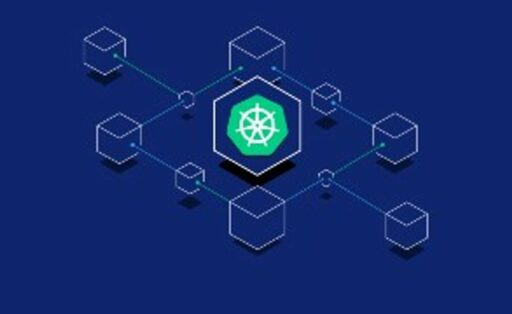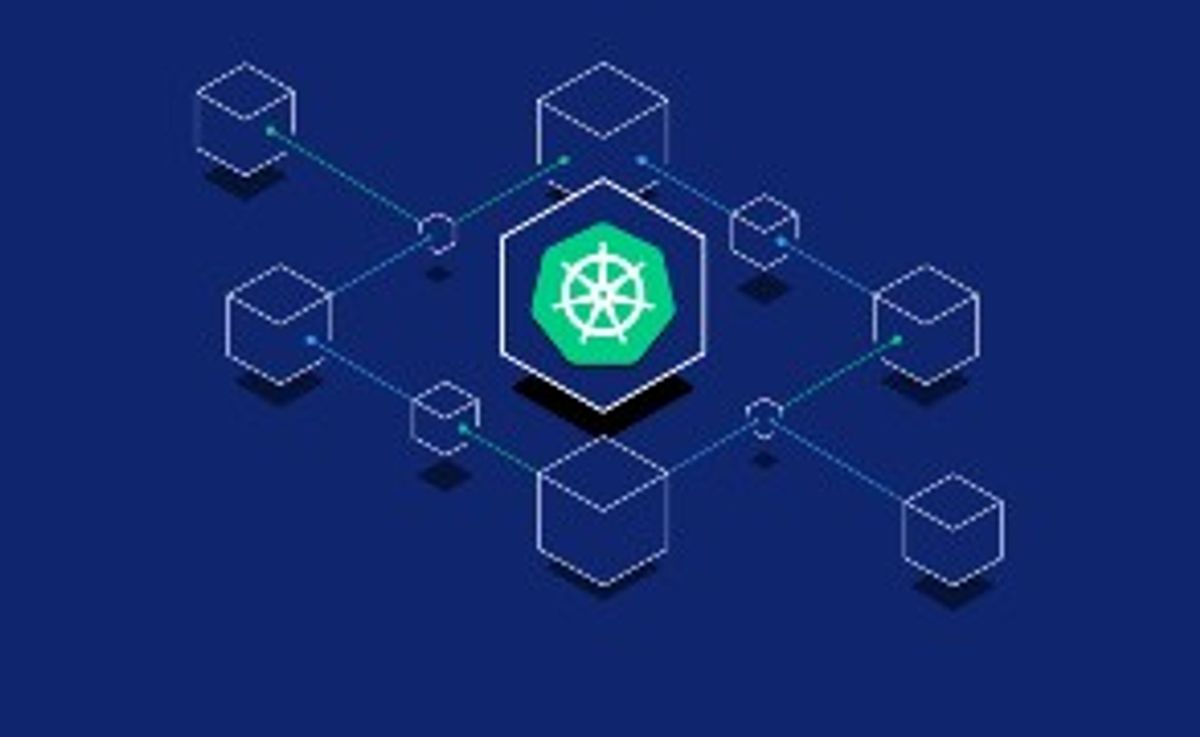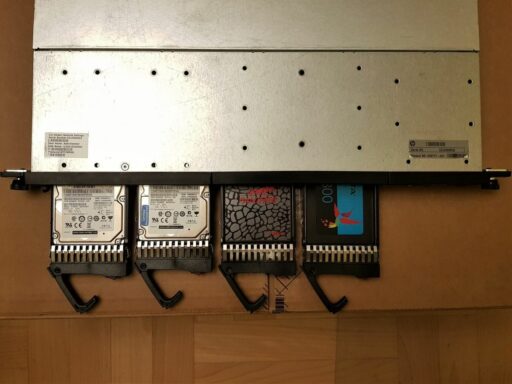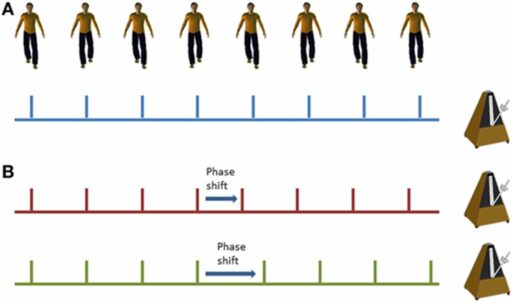Table of Contents
In the digital age, data is a critical asset for any organization. Understanding the journey of data, from its origin to its various transformation points, is essential for maintaining its quality, ensuring compliance, and making informed decisions. This article delves into the concepts of data lineage and data observability, explaining their importance and how they work together to create a robust data management framework.
Key Takeaways
- Data lineage is the process of tracking and visualizing data as it moves and transforms within an organization, providing crucial insights for identifying issues and ensuring compliance.
- Data observability complements data lineage by offering real-time monitoring and proactive issue resolution, enhancing the overall understanding of data’s health and usage.
- Together, data lineage and data observability ensure data quality and accuracy, vital for reliable downstream processes and decision-making.
- Understanding the interconnection between data lineage and data observability is key to enhancing data security and gaining strategic insights.
- Implementing effective data management strategies involves overcoming challenges, leveraging advanced tools, and fostering a data-centric culture within organizations.
Defining Data Lineage and Its Significance

What is Data Lineage?
Data lineage is the process of tracking and visualizing the movement, transformation, and processing of data as it flows through various systems within an organization. It acts as a map that reveals the data’s origin, the paths it takes, and its ultimate destination. This mapping is critical for understanding how data is manipulated and utilized across different business processes.
Data lineage is not just about tracking; it’s about gaining a comprehensive view of data’s journey and its evolution over time.
By providing a clear view of data’s journey, lineage tools help organizations to:
- Ensure data quality and integrity
- Simplify the detection and correction of errors
- Facilitate compliance with regulations
- Enhance the efficiency of data management
Understanding data normalization is crucial for business operations. It involves arranging data, removing redundancy, grouping related data, and resolving inconsistencies for easier analysis.
The Historical Perspective and Compliance
The concept of data lineage is not merely a modern innovation; it has evolved to become a critical aspect of data management, particularly in the context of compliance. Data lineage provides a historical record of data’s journey, from its origin through various transformations to its final form. This record is invaluable for auditing and regulatory purposes, ensuring that data provenance is transparent and verifiable.
In today’s regulatory landscape, compliance is not optional but a stringent requirement. Data lineage tools enable organizations to meet these demands by offering clear insights into data’s lifecycle. For instance, regulations such as GDPR and HIPAA necessitate strict data handling practices, where data lineage plays a pivotal role in demonstrating compliance.
By systematically tracking data’s evolution, organizations can not only comply with regulations but also gain a deeper understanding of their data’s story.
The table below outlines key regulatory frameworks and the aspects of data lineage they emphasize:
| Regulatory Framework | Data Lineage Requirement |
|---|---|
| GDPR | Data processing history |
| HIPAA | Access and modification records |
| SOX | Audit trails |
Understanding and adhering to these regulations is essential for maintaining the integrity of data management practices and avoiding the severe consequences of non-compliance.
Data Lineage as the Backbone of Data Governance
Data lineage is integral to the framework of data governance, providing a clear and auditable trail of data’s journey from origin to destination. It ensures accountability and transparency in the handling of data, which is vital for regulatory compliance and maintaining trust with stakeholders.
- Historical Record: Captures the evolution of data over time.
- Compliance and Auditing: Demonstrates data provenance and usage.
- Data Quality: Facilitates the identification and correction of errors.
- Security: Highlights potential vulnerabilities in data flow.
By embedding data lineage into data governance practices, organizations can effectively manage the lifecycle of their data, from creation to retirement. This not only supports compliance with regulations but also empowers organizations to maintain high data quality standards and robust security protocols.
Exploring the Role of Data Observability

The Definition and Purpose of Data Observability
Data observability is the capability to monitor and infer the integrity, health, and quality of data in real-time. This involves using advanced monitoring tools, anomaly detection algorithms, and automated alerting systems to proactively identify issues, ensuring data compliance, and maintaining data quality standards.
Data observability enables stakeholders to have a clear picture of the trustworthiness and reliability of data, which is essential for making informed decisions.
By incorporating data observability into the data lineage framework, organizations can enhance the accuracy and reliability of the lineage information. This synergy is particularly important as it allows for the detection and rectification of data issues before they impact downstream processes.
The purpose of data observability extends beyond mere monitoring; it is about enabling timely decisions based on accurate and reliable data, which leads to improved operational efficiency and better business outcomes. The following list outlines the core components of data observability:
- Continuous monitoring of data at each stage of its lifecycle
- Detection of anomalies and potential issues
- Assurance of data integrity and quality
- Real-time insights into quality metrics and performance indicators
How Data Observability Complements Data Lineage
Data observability extends the capabilities of data lineage by offering real-time monitoring and insights into data health. It acts as a dynamic layer over the static map of data lineage, providing a more granular view of data’s current state. This synergy allows for the immediate detection and remediation of issues, ensuring that the data’s journey remains accurate and trustworthy.
By integrating data observability with data lineage, organizations gain a powerful toolset for managing their data ecosystem. Data observability focuses on the operational aspects, such as:
- Performance metrics
- Quality indicators
- Anomaly detection
Data observability ensures that the lineage information reflects the true quality and state of the data at any given moment.
The combination of data lineage and data observability empowers organizations to maintain high data quality standards and supports informed decision-making. Together, they form a comprehensive approach to data management that is crucial for meeting today’s business intelligence and regulatory demands.
Proactive Monitoring and Issue Resolution
In the realm of data management, proactive monitoring is a critical component that ensures the health and performance of data systems. By leveraging advanced monitoring tools and anomaly detection algorithms, organizations can anticipate and address issues before they escalate. Automated alerting systems play a pivotal role in this process, notifying relevant personnel of potential problems in a timely manner.
The integration of predictive analytics into data observability tools allows for the early detection of irregularities, facilitating appropriate corrective actions. This approach not only maintains data quality standards but also supports compliance and operational efficiency. The table below outlines the key benefits of proactive monitoring in data observability:
| Benefit | Description |
|---|---|
| Early Detection | Identifies potential issues before they become critical. |
| Timely Alerts | Automated systems notify of anomalies promptly. |
| Compliance Support | Helps ensure adherence to data regulations. |
| Operational Efficiency | Minimizes downtime and improves decision-making. |
Proactive monitoring extends beyond real-time analysis, encompassing the entire data journey and reinforcing the trustworthiness of data lineage information.
Adopting technologies such as metadata management platforms and data quality tools can streamline the implementation process, ensuring scalability and reliability. These tools are instrumental in maintaining the integrity and accuracy of data, which is essential for trustworthy data lineage.
Ensuring Data Quality and Accuracy

The Interplay Between Data Lineage and Data Quality
The interplay between data lineage and data quality is pivotal for maintaining the integrity of an organization’s data ecosystem. Data lineage provides a roadmap of the data’s journey, enabling the identification and correction of errors that may have been introduced at any stage of the data lifecycle. This traceability is crucial for ensuring that the data used in decision-making is both reliable and accurate.
- Data lineage helps in pinpointing the exact stage where data quality issues arise.
- It facilitates the understanding of how data transformations impact quality.
- Organizations can use lineage information to improve data cleansing and enrichment processes.
By proactively managing data lineage, businesses can significantly reduce the risk of data quality issues, which in turn strengthens the trust in their data assets.
Ensuring data quality is not just about correcting errors, but also about establishing a robust framework that prevents inaccuracies from occurring in the first place. Data lineage plays a key role in this preventative approach by offering visibility into the data’s history and usage patterns.
Addressing Inconsistencies and Inaccuracies
In the realm of data management, addressing inconsistencies and inaccuracies is pivotal to maintaining the integrity of data-driven decisions. Data lineage plays a crucial role in this aspect by providing a clear trail of the data’s journey, enabling teams to pinpoint where errors may have been introduced.
By leveraging data lineage, organizations can trace errors back to their source, facilitating a more efficient rectification process.
To effectively address these issues, a systematic approach is often adopted:
- Identification: Utilize data lineage to detect anomalies and deviations in data as it flows through various processes.
- Analysis: Assess the impact of the identified issues on downstream systems and business operations.
- Correction: Implement fixes at the source to prevent the propagation of errors.
- Verification: Re-examine the data post-correction to ensure the accuracy of the fix and the integrity of the data.
This methodical approach ensures that data quality is not compromised, and that the organization’s data assets remain reliable and trustworthy.
Strengthening Downstream Data Processes
Ensuring the integrity of downstream data processes is crucial for maintaining the overall quality of data within an organization. Robust data lineage practices enable a clear view of data provenance, facilitating the identification and rectification of issues before they propagate. This proactive approach is essential for preserving the trustworthiness of data used in critical business decisions.
- Fostering collaboration across departments enhances transparency.
- Leadership support is key for cultural shifts towards data-centricity.
- Leveraging the right tools ensures scalability and data integrity.
By strengthening downstream data processes, organizations can ensure that the data they rely on for decision-making is accurate and reliable. This is fundamental for achieving a competitive edge in today’s data-driven landscape.
The Interconnection Between Data Lineage and Data Observability

Understanding the Synergy
The interconnection between data lineage and data observability is a powerful alliance that enhances the overall data management framework. Data lineage provides the roadmap, detailing the journey of data through its lifecycle, while data observability offers the tools to monitor and ensure the health of data in real-time. Together, they create a comprehensive view of data’s journey and its current state.
- Data lineage maps the data’s path, identifying where it originates, how it’s transformed, and where it ends up.
- Data observability keeps a vigilant eye on the data, detecting anomalies and performance issues as they arise.
By integrating data lineage with data observability, organizations can proactively address issues, improve data quality, and support compliance efforts.
This synergy is not just about technology; it’s about fostering a culture that values data transparency and collaboration. It requires the involvement of various stakeholders, from IT to business units, to ensure that data insights are accurate and actionable. The table below illustrates the roles and responsibilities in achieving this synergy:
| Role | Responsibility |
|---|---|
| IT Teams | Implement and maintain data lineage and observability tools |
| Data Governance | Establish policies and standards for data management |
| Business Units | Utilize data insights for decision-making |
Understanding this synergy is crucial for organizations to leverage their data effectively and maintain a competitive edge in today’s data-driven world.
Enhancing Data Security Through Visibility
In the realm of data management, visibility is a cornerstone of security. By mapping the journey of data through an organization, data lineage tools illuminate the path taken by sensitive information, revealing potential weak points where breaches could occur. This transparency is not just about knowing where the data resides; it’s about understanding how it interacts with various systems along its journey.
With data lineage, organizations gain the power to preemptively identify and address security vulnerabilities, thereby fortifying their defenses against unauthorized access and data breaches.
Moreover, data observability complements this by providing real-time insights into the health and status of data. It acts as a sentinel, constantly monitoring for anomalies that could indicate a security threat. Together, these practices form a robust framework for protecting an organization’s data assets.
- Regulatory Compliance: Ensures traceability and integrity of data.
- Proactive Monitoring: Identifies potential vulnerabilities.
- Immediate Action: Addresses discrepancies and anomalies swiftly.
- Trust Building: Demonstrates commitment to data protection.
Informed Decision-Making and Strategic Insights
Data lineage and data observability are pivotal in enhancing decision-making processes. By understanding the journey of data and monitoring its quality, organizations can trust the data they use to make strategic decisions. This trust in data integrity is crucial for deriving accurate analytical insights and making informed choices that drive business success.
By leveraging data lineage and data observability, organizations can enhance the accuracy and trustworthiness of the data used in decision-making processes.
For instance, consider the impact on governance teams who can build data everyone can trust, and business teams who gain access to data with meaningful context. The following list outlines some key use cases facilitated by data lineage and observability:
- Find and understand your data
- Automate and centralize documentation
- Cultivate healthy data your team trusts
- Cut costs and improve efficiency
- Curate collective knowledge
- Foster simple collaboration for everyone
In practice, this approach can transform how a financial institution makes investment decisions. With accurate and up-to-date data, decision-makers can confidently make strategic choices, leading to better financial outcomes.
Implementing Effective Data Management Strategies
Challenges in Data Lineage and Observability
Implementing data lineage and observability within an organization’s data management framework is not without its challenges. Technical difficulties often arise from the complexity of extracting lineage information across diverse data sources and intricate transformations. Ensuring the scalability and performance of systems that capture and maintain data lineage is crucial, yet challenging.
Adequate integration with existing data infrastructure and technologies is necessary to overcome these hurdles.
Another layer of complexity is introduced by the need for robust metadata management. Metadata provides essential context and information about data, and its accurate capture and maintenance are pivotal for effective data lineage tracking. This necessitates the strategic planning and implementation of metadata repositories and tagging mechanisms to cohesively link data elements throughout the organization.
Organizational challenges also play a significant role. These can include:
- Resistance to change from stakeholders
- Lack of clear ownership of data processes
- Insufficient training and understanding of data lineage importance
- Budget constraints limiting the adoption of necessary tools and technologies
Leveraging Tools and Technologies
The adoption of appropriate tools and technologies is crucial for effective data management. Robust data lineage and observability solutions can automate the extraction of lineage information and provide real-time monitoring capabilities. This automation is key to understanding data flows, identifying bottlenecks, and optimizing data pipelines.
Metadata management platforms, data quality tools, and monitoring systems are essential components of a data management strategy. Metadata management platforms offer a centralized repository for metadata, simplifying the tracking of data lineage. Data quality tools ensure the integrity and accuracy of data, while monitoring systems facilitate proactive issue resolution.
By leveraging these technologies, organizations can focus on high-impact initiatives and enable users with varying skill sets to access and utilize data insights, promoting an inclusive data-driven culture.
Fostering a Data-Centric Organizational Culture
Building a data-centric culture is pivotal for the successful implementation of data management strategies. Leadership support and buy-in at all levels are crucial to drive the cultural shifts necessary for data-driven decision-making. Establishing clear data governance policies and training programs can enhance awareness and collaboration, breaking down silos and promoting cross-functional teamwork.
By creating a shared understanding of the importance of data lineage and data observability, organizations can encourage a culture of data transparency and accountability.
To overcome organizational challenges such as resistance to change and siloed approaches, it is essential to align stakeholders and define clear roles and responsibilities. The following table outlines key roles and their contributions to fostering a data-centric culture:
| Role | Contribution |
|---|---|
| Governance Teams | Build data everyone can trust |
| Business Teams | Accessible data with company context |
| Cross-functional Teams | Promote data transparency and accountability |
In addition to leveraging the right tools and technologies, cultivating a data-centric organizational culture is a step towards embracing data lineage and data observability, ultimately leading to data-driven success.
Conclusion
In conclusion, the journey of data within an organization is as critical as the data itself. Data lineage and data observability provide a comprehensive view of this journey, highlighting the importance of understanding where data originates, how it transforms, and where it ultimately resides. This knowledge is not just a technical necessity but a strategic asset that ensures data quality, compliance, and informed decision-making. As we have explored, the interplay between data lineage and observability is fundamental to modern data management practices. By embracing these concepts, organizations can navigate the complexities of data ecosystems with confidence, ensuring that their data remains a reliable and valuable resource in an increasingly data-driven world.
Frequently Asked Questions
What is data lineage and why is it important?
Data lineage refers to the ability to track and visualize the movement, transformation, and processing of data throughout its journey within an organization’s systems. It is important because it helps identify potential issues, ensures compliance, and supports data governance by tracing data’s origins and transformations.
How does data lineage support regulatory compliance?
Data lineage provides a historical record of data transformations and movements, which is essential for compliance, auditing, and regulatory purposes. It allows organizations to demonstrate data provenance and ensures adherence to regulations by tracking how data has been used, modified, or shared over time.
What is the role of data observability in data management?
Data observability plays a critical role in data management by providing the tools to proactively monitor the health and reliability of data systems. It complements data lineage by offering real-time insights and context for identifying and addressing data anomalies and potential points of failure.
How do data lineage and data observability ensure data quality and accuracy?
By understanding data lineage and continuously monitoring data through observability, organizations can detect inconsistencies or inaccuracies early on. This proactive approach allows for prompt rectification, ensuring that downstream processes rely on high-quality and accurate data.
Can data lineage enhance data security measures?
Yes, understanding data lineage can enhance data security measures by identifying potential vulnerabilities in the data flow. By knowing how data moves and transforms across systems, organizations can better protect sensitive information and prevent unauthorized access or breaches.
What are the challenges in implementing data lineage and observability?
Challenges include the complexity of tracking data across diverse systems and platforms, ensuring the scalability of lineage and observability tools, and fostering a data-centric culture that prioritizes data management practices. Overcoming these challenges often requires leveraging advanced tools and technologies.





